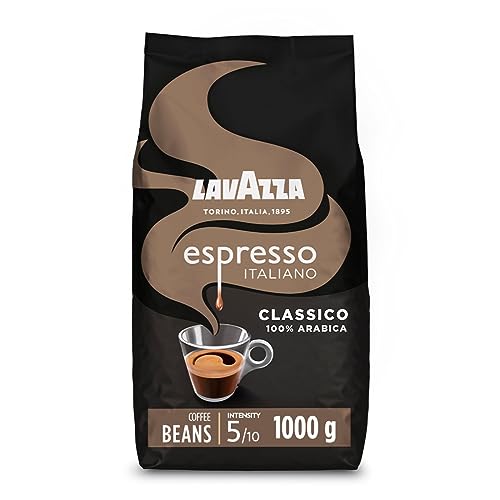Starbucks Coffee Beans 1kg
Starbucks was a cozy cafe situated in Seattle, Washington before it was famous for its Peppermint Mochas and red holiday cups. Starbucks' founders were primarily focused on selling whole beans of coffee but they didn't see the potential of espresso drinks.
This changed when Schultz came on board. He was determined to show off his roasting and blending abilities.
Origin
Before Starbucks coffee beans make it to your cup, they've been on a long and winding journey. Coffee is grown almost exclusively in the Coffee Belt. This area stretches across the globe between the Tropics Cancer and Capricorn. The climate, soil, and the culture of each region affects the taste of the coffee beans. Starbucks sources its coffee beans from more than 30 countries.
The majority of Starbucks coffees come from three major regions: Latin America, Africa and Asia-Pacific. These regions are known for their full-flavor and balance of acidity and body. Starbucks also sources coffee from St. Best coffee beans 1kg in the South Atlantic Ocean, a volcanic tropical island paradise.
Starbucks coffee beans are roasted to perfection for an incredibly smooth and delicious taste. The coffee beans are ground into a fine powder which is ready to be brewed. The powder is then mixed with water, and put into the cup to make the perfect cup. The result is a cup that is full of flavor and energy.
While the majority of Starbucks coffees are made from blends of different beans, there are numerous kinds of single-origin varieties available at the stores of the chain. Single-origin Starbucks coffees come in a variety of flavors like chocolatey and fruity sweet and sweet and. Certain single-origin coffees are certified organic.
Starbucks's beans are sourced from all over the world however, they must meet certain standards to be considered specialty. The term "specialty coffee" only came into use in the 1980s, when cafes and roasters started to experiment with lighter roasting, manual methods and transparent sourcing. Starbucks hasn't started making its coffee purchases with these standards in mind, but it has since adopted a few of them.
Starbucks also strives to improve the quality of life of those who cultivate its coffee. It gives its farmers a profit above market prices and assists them in investing in their communities. It also promotes sustainability and strives to reduce waste. This has resulted in the creation of new techniques for coffee cultivation and practices that safeguard the environment.
Roast
Starbucks buys its beans in large quantities and roasts them in large quantities. The roasting process can take between 10 and 15 minutes and the result is that the beans are dark and roasted. The dark roasted beans give an intense flavor and a full body. The beans are ground and then sent to stores and supermarkets in the form coffee grind. This ground coffee is bitter and is not ideal for making the best cup. This is the reason why many people add lots of sugar, cream, flavors, whipping cream and more to their coffee. This won't mask the bitterness of the coffee, but it does make the drink more appealing.
The beans begin to steam when they are put in the roaster for the first time due to their internal moisture. Then comes the "first crack", an audible sound that signals us that the roasting process has actually begun. At this stage, the sugars start to turn into caramel and the water that's been bind up begins to escape. In this stage the structure of the beans breaks down and the oils begin to move outward. At the end of this phase most coffees are thought to be city roasts.

The beans are then cooled and are separated from any stones or other impurities that have been removed from the roaster. They are then checked by hand and then bagged to be sold. Some beans have a dark spot called"quaker. These beans did not change color and taste burned. This is a typical phenomenon and does not mean that the coffee is bad.
The beans are typically roast in small batches, sometimes as little as 20 pounds. These are called "micro lots". This is because every coffee is roasted to specifications set by a Starbucks team of coffee masters. The team of coffee masters develops profiles that are used by all Starbucks(r), roasting facilities across the globe. These profiles ensure that every cup of coffee is consistent and has a certain amount of body, flavour and aroma.
Flavor
Starbucks purchases their beans directly from the farm on which they are grown to improve the quality of their beans and ensure an ethical source. They also plant one coffee tree for each pound of beans sold. The beans themselves aren't labeled to indicate where they come from, though some of the blends are named - Veranda originates from Sumatra, Komodo Dragon from Indonesian, and Anniversary is a blend of african and centeral american beans. The beans have a unique flavour profile and brew a smooth cup with a delicate blend of sweetness and smoothness. Every sip is a symphony of flavours that leave a long, pleasant taste on your palate.
Weight
The weight of starbucks coffee beans 1kg depends on the type of blend. A Starbucks House Blend, for instance, weighs 14 oz per pound. Walmart's pound of Espresso Roast beans weighs 16 oz. This translates to a 67% cost premium at Starbucks as compared to Wal-Mart.
Starbucks' Pike Place Roast was named after Seattle's famous market. Its medium-light roast offers balance, sweetness, and smoothness in every cup. Blended using beans from Latin America, this blend is ideal for Americano and espresso. This premium blend comes with a FlavorLock package to protect the coffee and for flavor preservation. This is Starbucks the classic signature coffee. This is a great option for those who love coffee! Made with 100 percent Arabica beans. This is a great gift for Starbucks customers.
